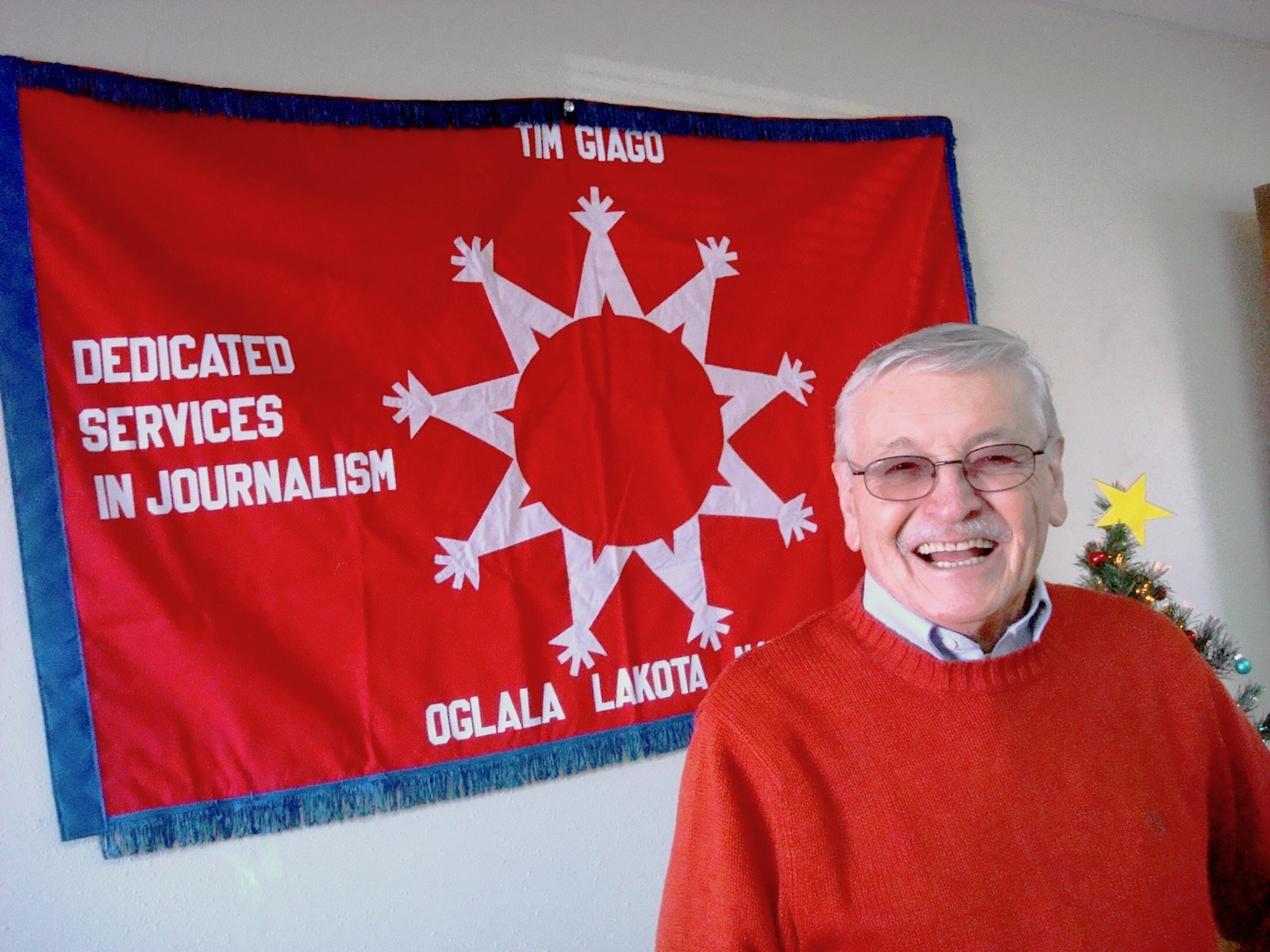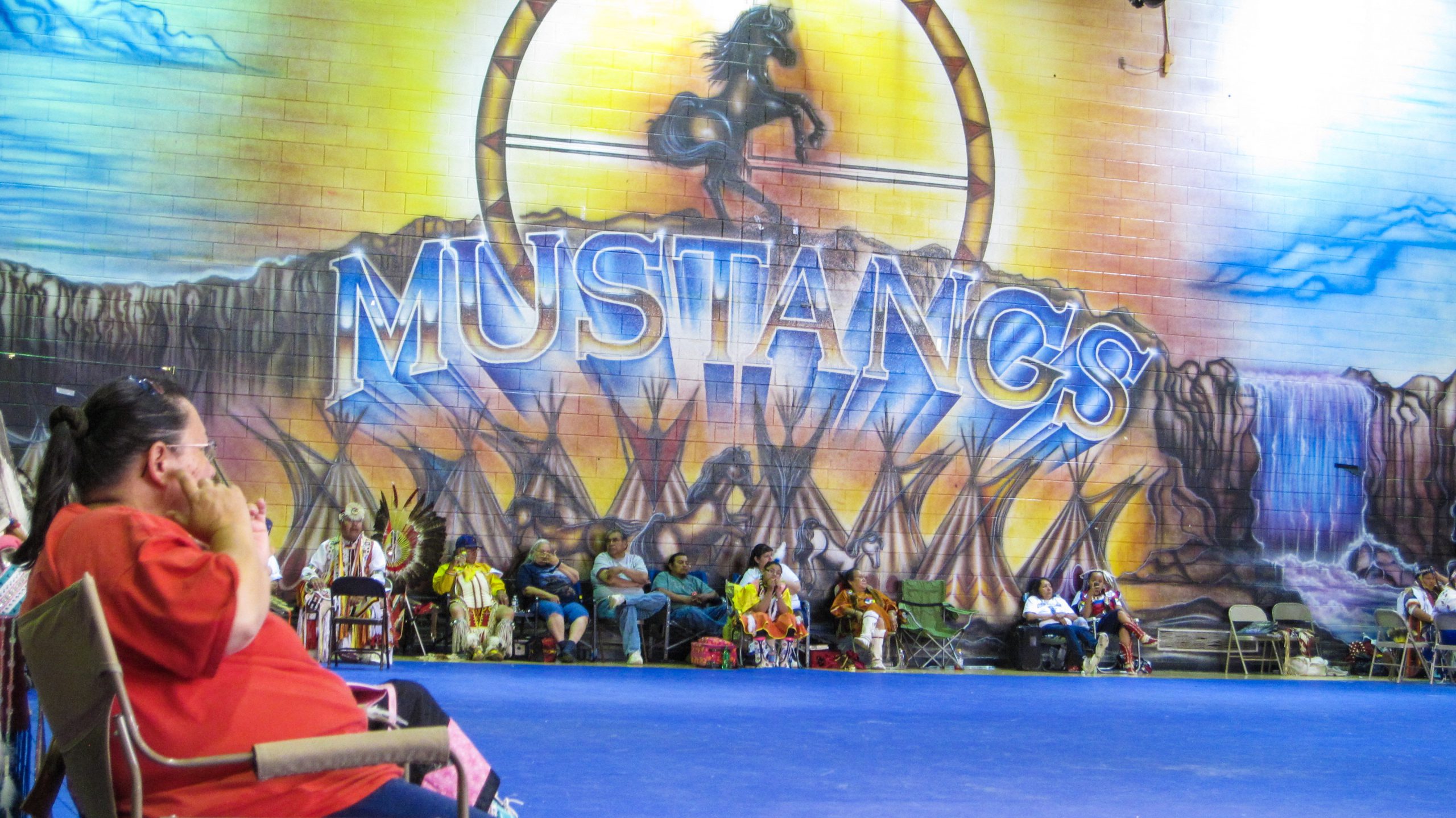Indianz.Com > News > Tim Giago: A wacipi that hid many secrets

Notes from Indian Country
A wacipi (dance) that hid many secrets
It is hard to know where you are going until you know where you have been.
85 years ago a wacipi (powwow) was held in the Pejuta Haka (Medicine Root) District, Kyle, on the Pine Ridge Reservation. The powwow went on for 4 days and 4 nights. The significance of this particular powwow cannot be understated. We need to take a look at the years leading up to this powwow to understand its importance.
At the turn of the century the United States opened up the Pine Ridge Reservation to outside settlers. Much of the land that once belonged to the tribe was lost to them. This loss of this land that was taken from the tribe by an Act of Congress, included the Sacred Black Hills. But taking the land was just the beginning.
The people of the Sioux Nation had to be civilized, and by that it meant the government had to start with the children. By following the example of the Spanish Government when it took over the indigenous lands of South and Central America, the government, in collusion with the Christian churches, built Indian missions like Holy Rosary at Pine Ridge, St. Francis at Rosebud, St. Stephan at Crow Creek, St. Joseph’s at Chamberlain and Marty Mission at Wagner on the Yankton Sioux Reservation with the sole purpose of destroying the language and traditions of the children. They sent cars to the outlying communities on the reservation and physically took the children away from their parents and hauled them to the boarding schools.
At the same time they outlawed the traditional spiritual practices and at times even jailing holy men and women. They did away with the traditional tribal councils and turned the tribal governments over to the Bureau of Indian Affairs.

Contact Tim Giago, Oglala Lakota, at journalist1@gmail.com. Giago is the founder of the Native American Journalists Association and the recipient of the H. L. Mencken Award for editorial writing.
Note: Content © Tim Giago
Search
Filed Under
Tags
More Headlines
Native America Calling: Treaties more than a century old provide both guidance and constraints
Native America Calling: Language revitalization: apps, games, and classroom lessons help keep Native languages vital
House Subcommittee on Oversight and Investigations holds hearing on cartels in Indian Country
Native America Calling: Tribal broadcasters scramble; Native higher ed leaders fight to keep funding
‘We’re frustrated’: Lawmakers press Indian affairs nominee on key issues
Cronkite News: Fires cause problems for Grand Canyon’s tourist economy
Press Release: Oklahoma City Indian Clinic receives health awards
AUDIO: Confirmation hearing for William “Billy” Kirkland to be Assistant Secretary for Indian Affairs
VIDEO: Confirmation hearing for William “Billy” Kirkland to be Assistant Secretary for Indian Affairs
NAFOA: 5 Things You Need to Know this Week (July 21, 2025)
Press Release: National Congress of American Indians continues to oppose racist imagery in sports
Chuck Hoskin: Cherokee Nation prepares for the future of public safety
Native America Calling: Tribes confront resource-intensive drive of Artificial Intelligence
Statement: Corporation for Public Broadcasting on elimination of federal funding
Native America Calling: Native Bookshelf with Tanya Talaga
More Headlines
Native America Calling: Language revitalization: apps, games, and classroom lessons help keep Native languages vital
House Subcommittee on Oversight and Investigations holds hearing on cartels in Indian Country
Native America Calling: Tribal broadcasters scramble; Native higher ed leaders fight to keep funding
‘We’re frustrated’: Lawmakers press Indian affairs nominee on key issues
Cronkite News: Fires cause problems for Grand Canyon’s tourist economy
Press Release: Oklahoma City Indian Clinic receives health awards
AUDIO: Confirmation hearing for William “Billy” Kirkland to be Assistant Secretary for Indian Affairs
VIDEO: Confirmation hearing for William “Billy” Kirkland to be Assistant Secretary for Indian Affairs
NAFOA: 5 Things You Need to Know this Week (July 21, 2025)
Press Release: National Congress of American Indians continues to oppose racist imagery in sports
Chuck Hoskin: Cherokee Nation prepares for the future of public safety
Native America Calling: Tribes confront resource-intensive drive of Artificial Intelligence
Statement: Corporation for Public Broadcasting on elimination of federal funding
Native America Calling: Native Bookshelf with Tanya Talaga
More Headlines